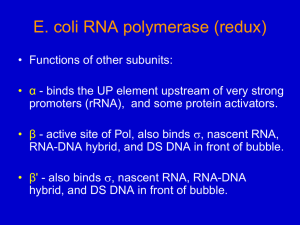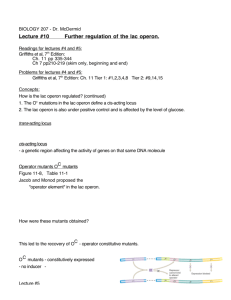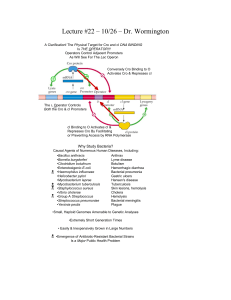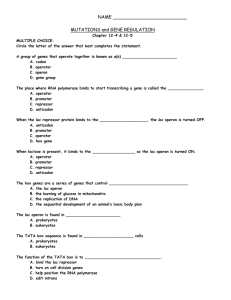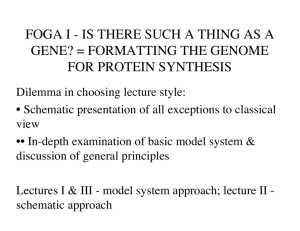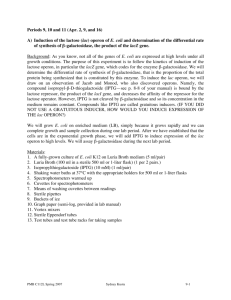Paper and pencil, not required: Online tool teaches microbiology
advertisement
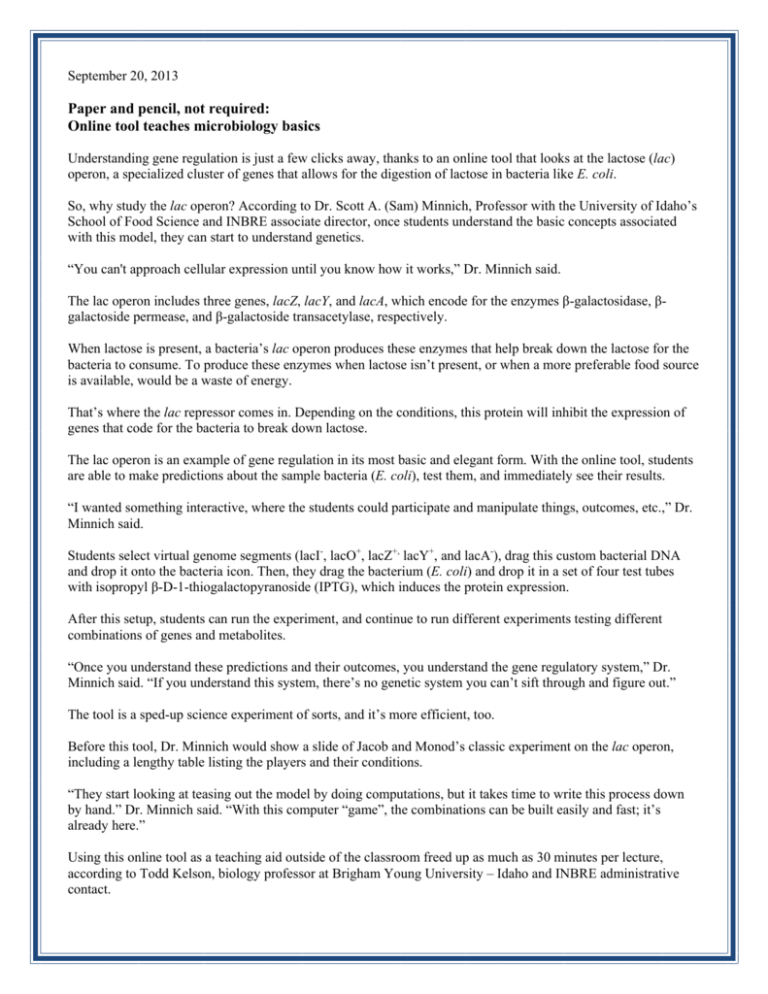
September 20, 2013 Paper and pencil, not required: Online tool teaches microbiology basics Understanding gene regulation is just a few clicks away, thanks to an online tool that looks at the lactose (lac) operon, a specialized cluster of genes that allows for the digestion of lactose in bacteria like E. coli. So, why study the lac operon? According to Dr. Scott A. (Sam) Minnich, Professor with the University of Idaho’s School of Food Science and INBRE associate director, once students understand the basic concepts associated with this model, they can start to understand genetics. “You can't approach cellular expression until you know how it works,” Dr. Minnich said. The lac operon includes three genes, lacZ, lacY, and lacA, which encode for the enzymes β-galactosidase, βgalactoside permease, and β-galactoside transacetylase, respectively. When lactose is present, a bacteria’s lac operon produces these enzymes that help break down the lactose for the bacteria to consume. To produce these enzymes when lactose isn’t present, or when a more preferable food source is available, would be a waste of energy. That’s where the lac repressor comes in. Depending on the conditions, this protein will inhibit the expression of genes that code for the bacteria to break down lactose. The lac operon is an example of gene regulation in its most basic and elegant form. With the online tool, students are able to make predictions about the sample bacteria (E. coli), test them, and immediately see their results. “I wanted something interactive, where the students could participate and manipulate things, outcomes, etc.,” Dr. Minnich said. Students select virtual genome segments (lacI-, lacO+, lacZ+, lacY+, and lacA-), drag this custom bacterial DNA and drop it onto the bacteria icon. Then, they drag the bacterium (E. coli) and drop it in a set of four test tubes with isopropyl β-D-1-thiogalactopyranoside (IPTG), which induces the protein expression. After this setup, students can run the experiment, and continue to run different experiments testing different combinations of genes and metabolites. “Once you understand these predictions and their outcomes, you understand the gene regulatory system,” Dr. Minnich said. “If you understand this system, there’s no genetic system you can’t sift through and figure out.” The tool is a sped-up science experiment of sorts, and it’s more efficient, too. Before this tool, Dr. Minnich would show a slide of Jacob and Monod’s classic experiment on the lac operon, including a lengthy table listing the players and their conditions. “They start looking at teasing out the model by doing computations, but it takes time to write this process down by hand.” Dr. Minnich said. “With this computer “game”, the combinations can be built easily and fast; it’s already here.” Using this online tool as a teaching aid outside of the classroom freed up as much as 30 minutes per lecture, according to Todd Kelson, biology professor at Brigham Young University – Idaho and INBRE administrative contact. “With this tool, we can now spend 30 minutes in class introducing the lactose operon, but then require students to learn and practice the rest on their own with the aid of this online tool,” Kelson said. Kelson put together a basic study to test how effective this program was as a teaching tool. Students in genetics and molecular biology lecture course at BYU-Idaho were given a graded homework assignment requiring that they use the lactose operon online activity. “Seventy-nine percent of students who used the online tool indicated that they believed their comprehension increased,” Kelson said. From traditional lectures, Kelson expected students to correctly answer 10 percent of the lac operon questions on their final exam months after this material was presented, but, they were scoring 70 percent after they used the online tool. “This shows that active learning outside of the classroom encourages deeper learning with this tool.” Explore this online tool here: http://www.uiweb.uidaho.edu/isee/studystudio/ Laura Kross: INBRE Science Writer

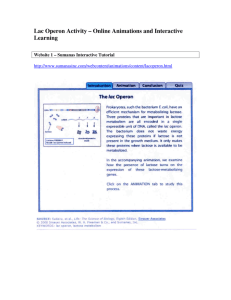
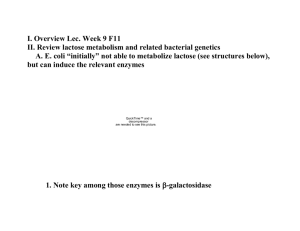
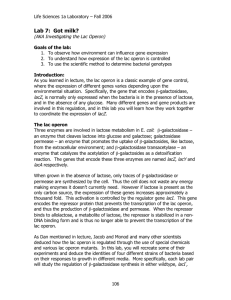
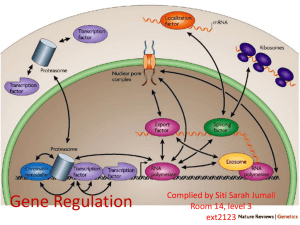
![Lac Operon AP Biology PhET Simulation[1]](http://s3.studylib.net/store/data/006805976_1-a15f6d5ce2299a278136113aece5b534-300x300.png)
